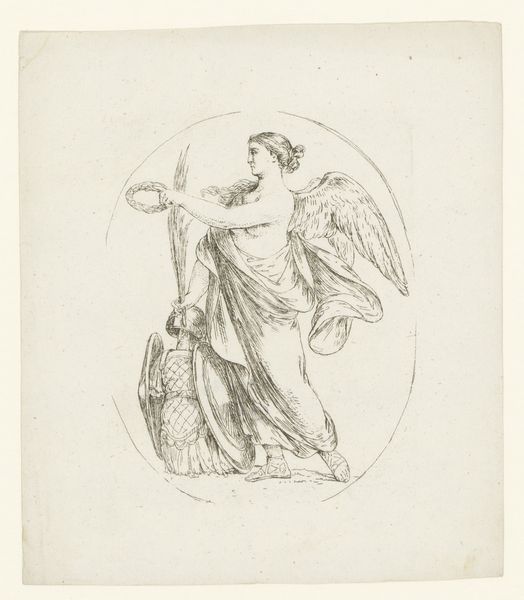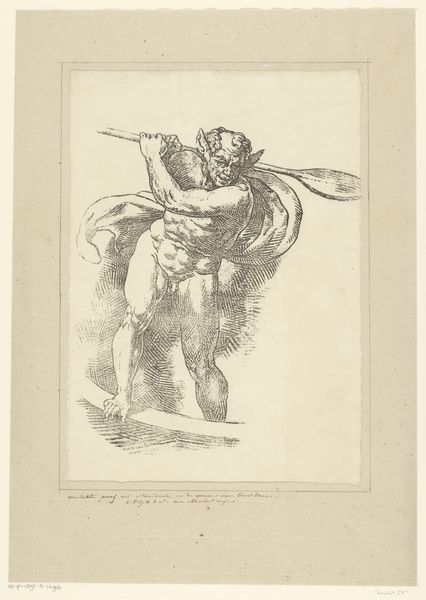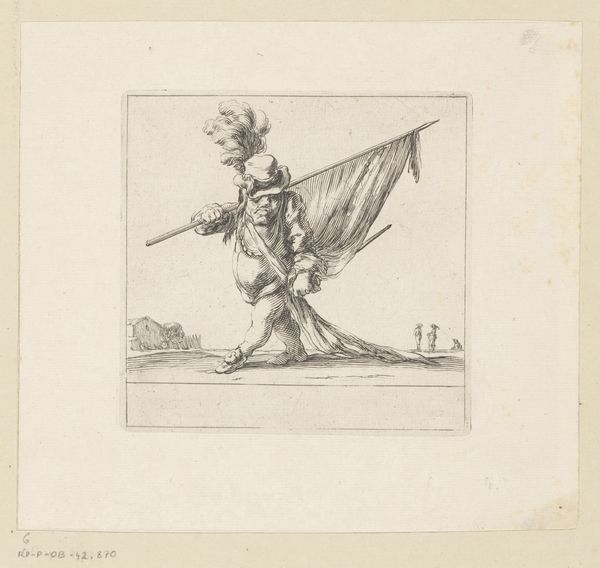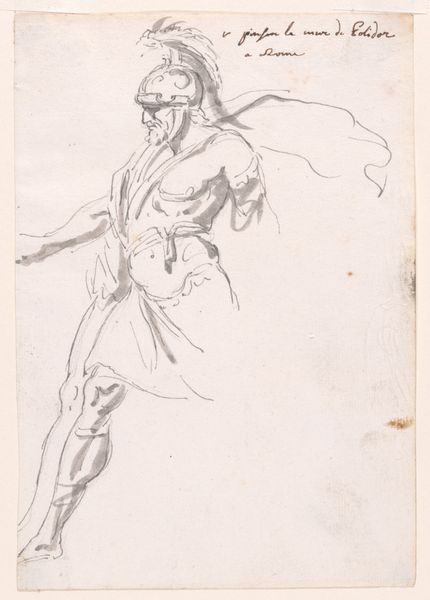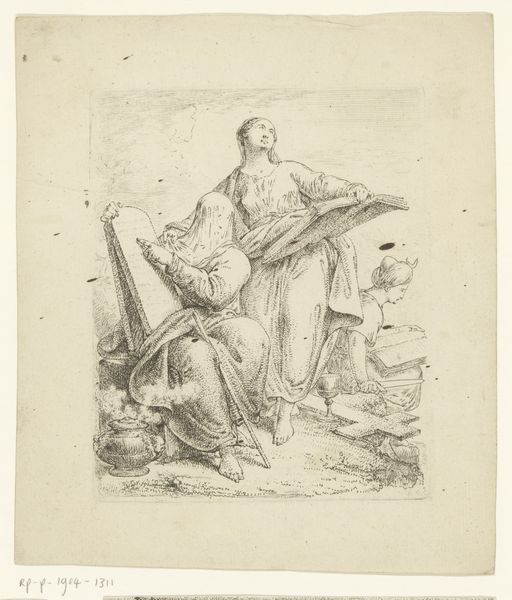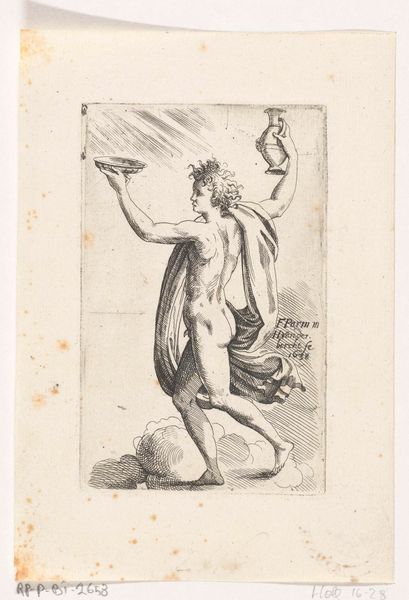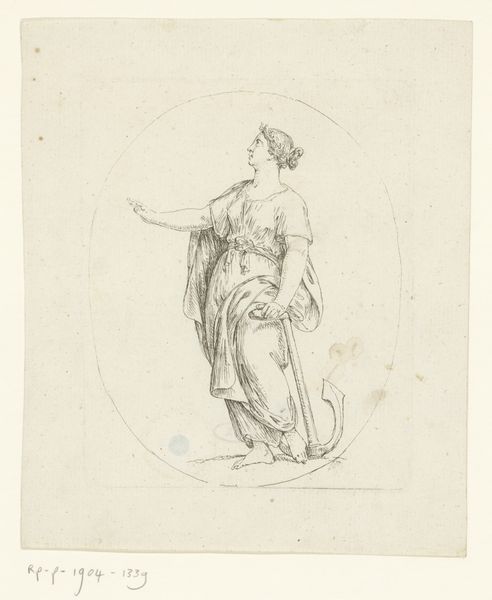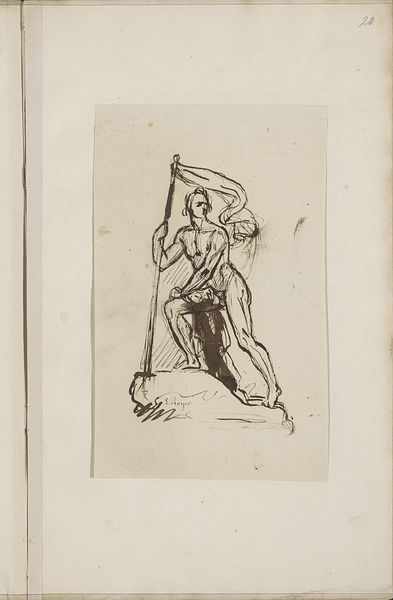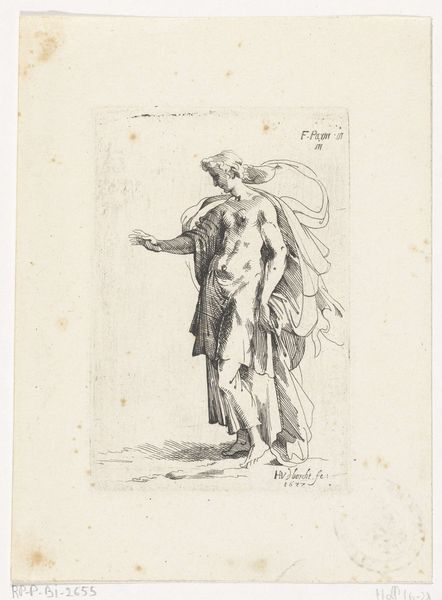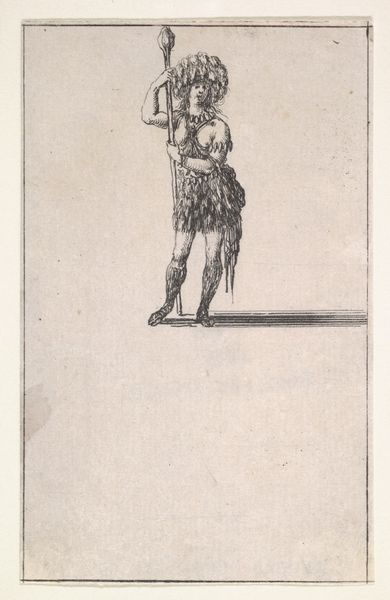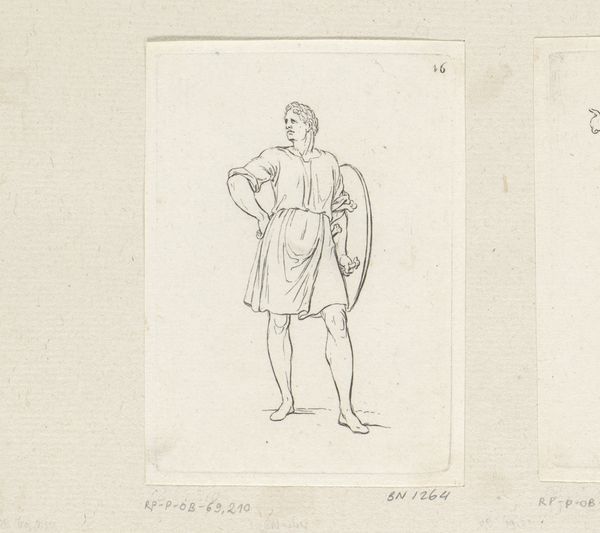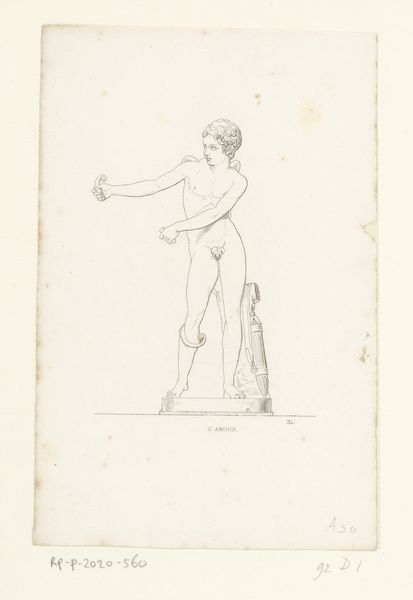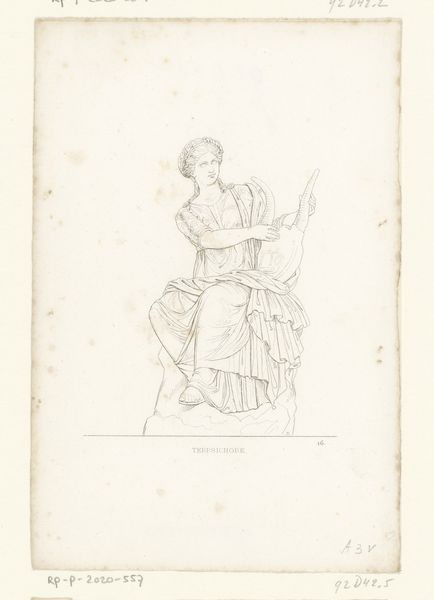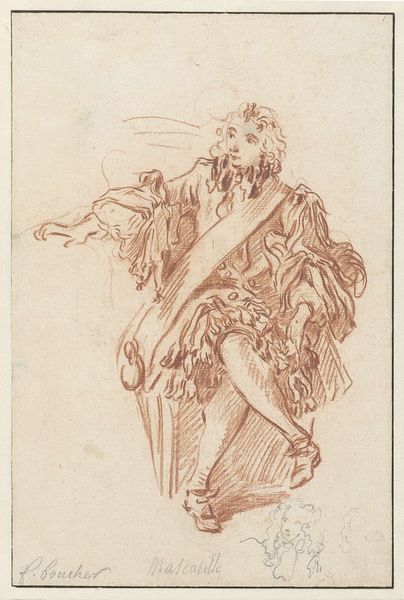
Dimensions: height 140 mm, width 110 mm
Copyright: Rijks Museum: Open Domain
Christian Bernhard Rode created this delicate line etching, Vadertje Tijd, which translates to Father Time, using the intaglio printmaking process. The design is first drawn, then each line is carefully etched into a metal plate with acid. Once printed, the ink sits slightly raised on the page, giving a tactile quality, and the fineness of the etched line allows for incredible detail. Note the delicate rendering of the figure's wings and flowing robes. Etching was highly prized for its capacity to reproduce images and disseminate knowledge. In the 18th century, this was especially important as social and political ideas spread among a growing reading public. The technique was particularly effective for allegorical subjects, such as this depiction of Time personified, offering commentary on contemporary society. Consider the labor-intensive process involved in creating the matrix and pulling prints, this speaks to the value placed on skilled craftsmanship during this era, and the expanding world of intellectual exchange. Etchings like this one played a crucial role in shaping public opinion. It reminds us that images, like objects, have a material history that influences their meaning.
Comments
No comments
Be the first to comment and join the conversation on the ultimate creative platform.
